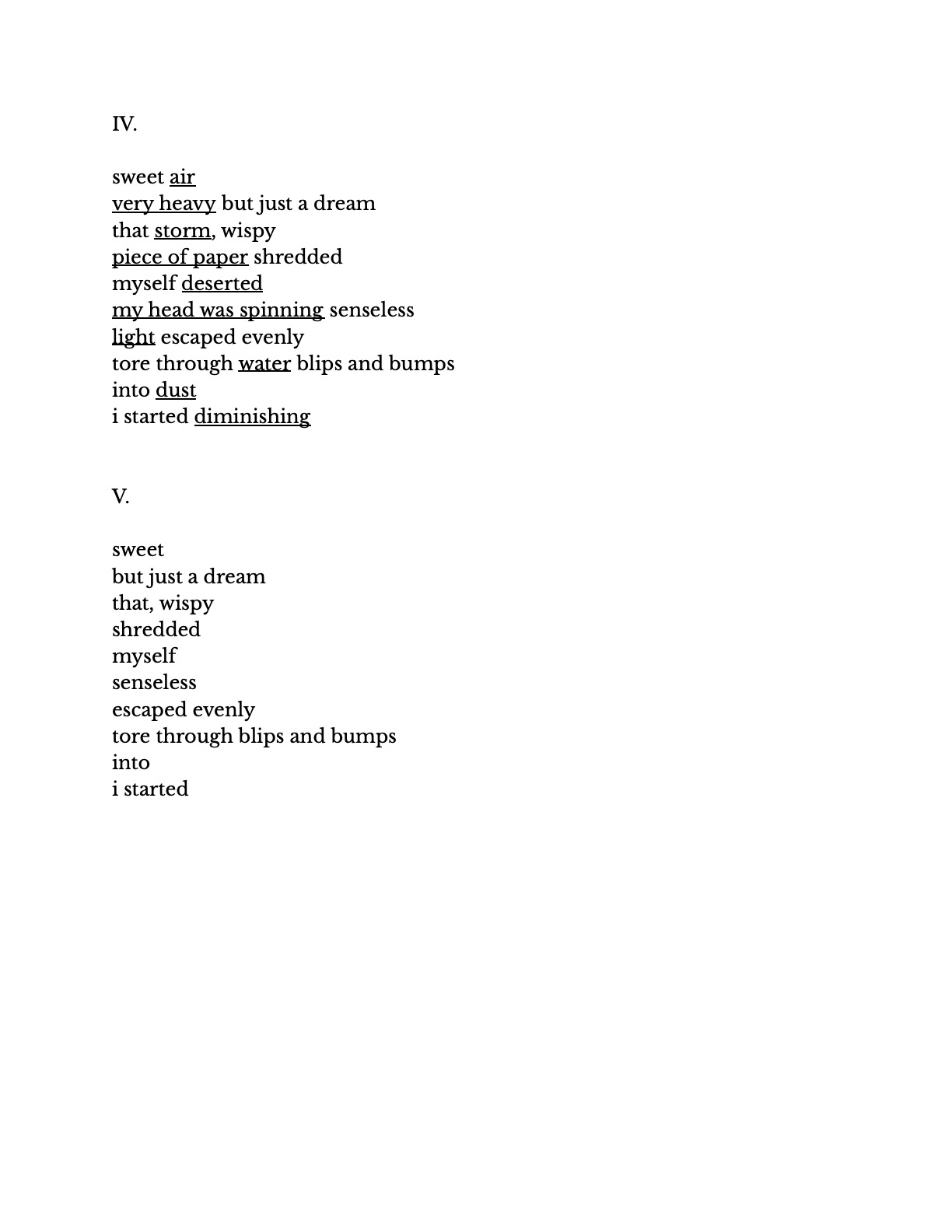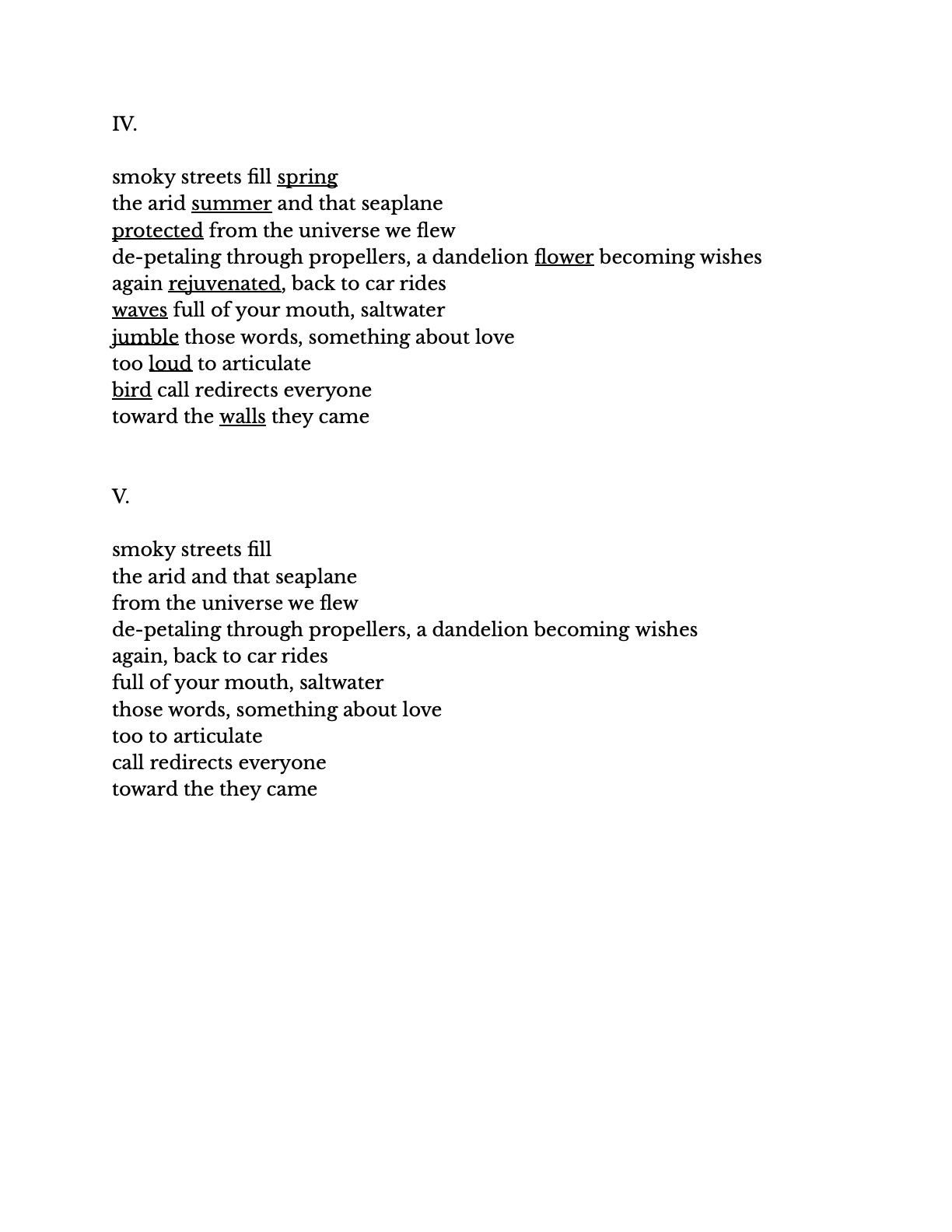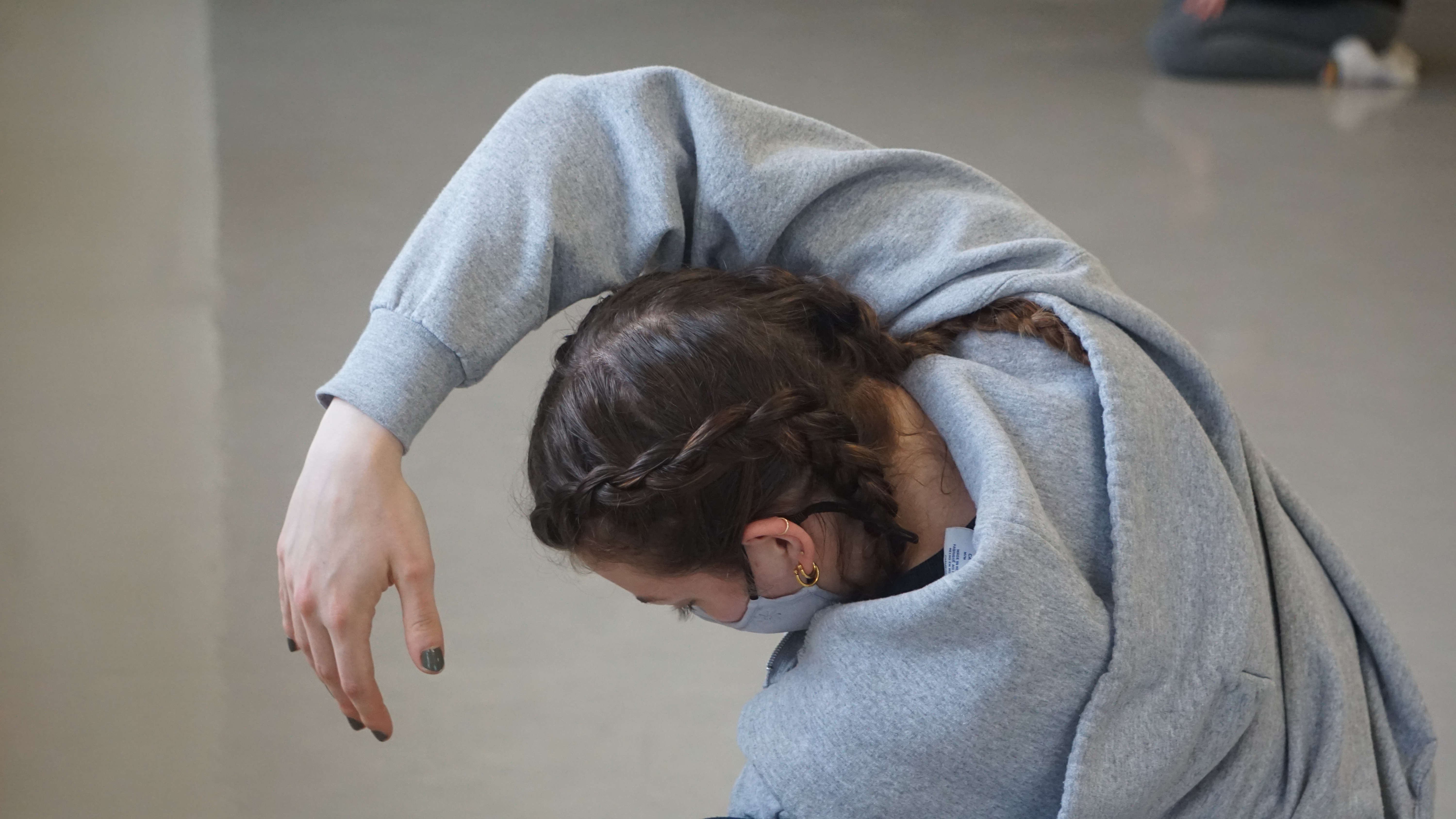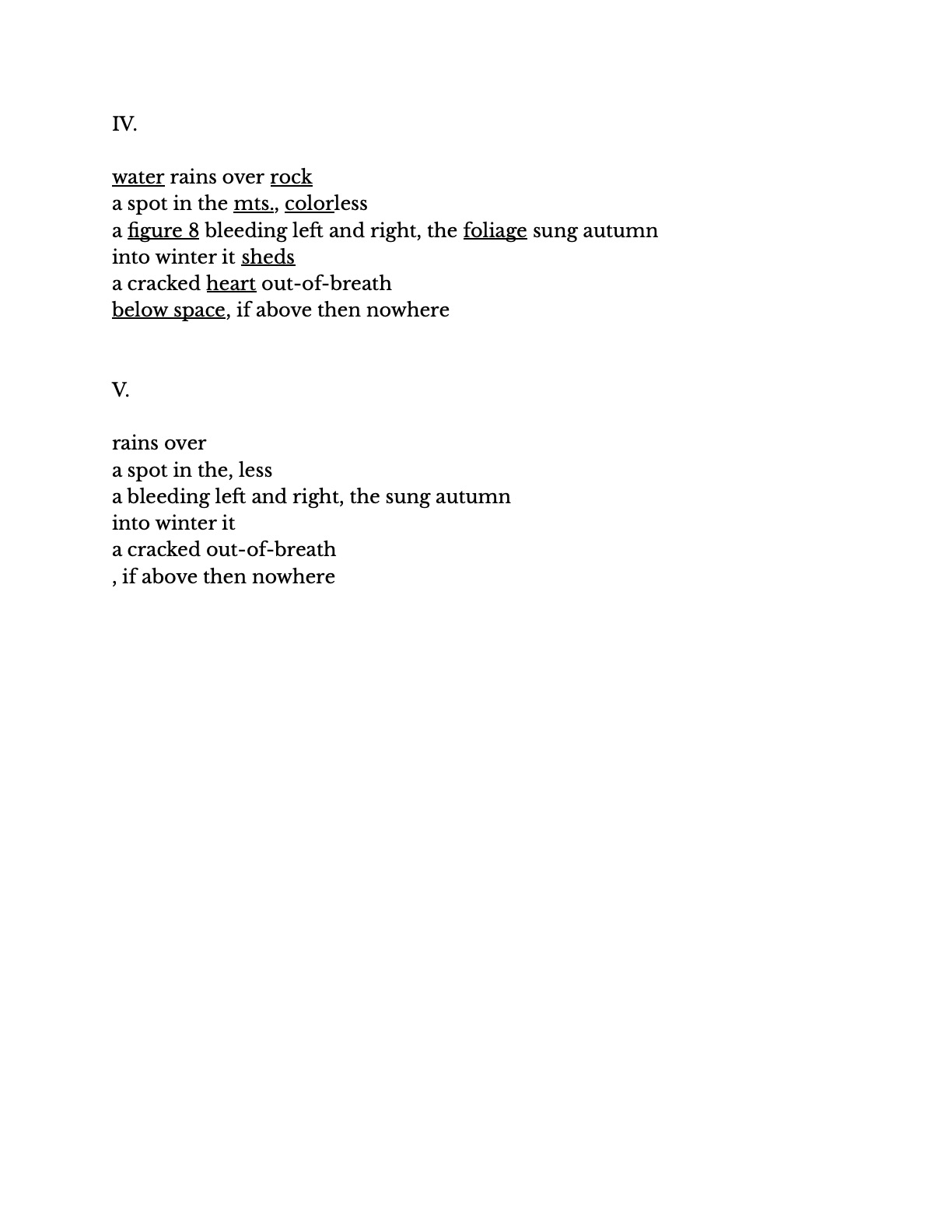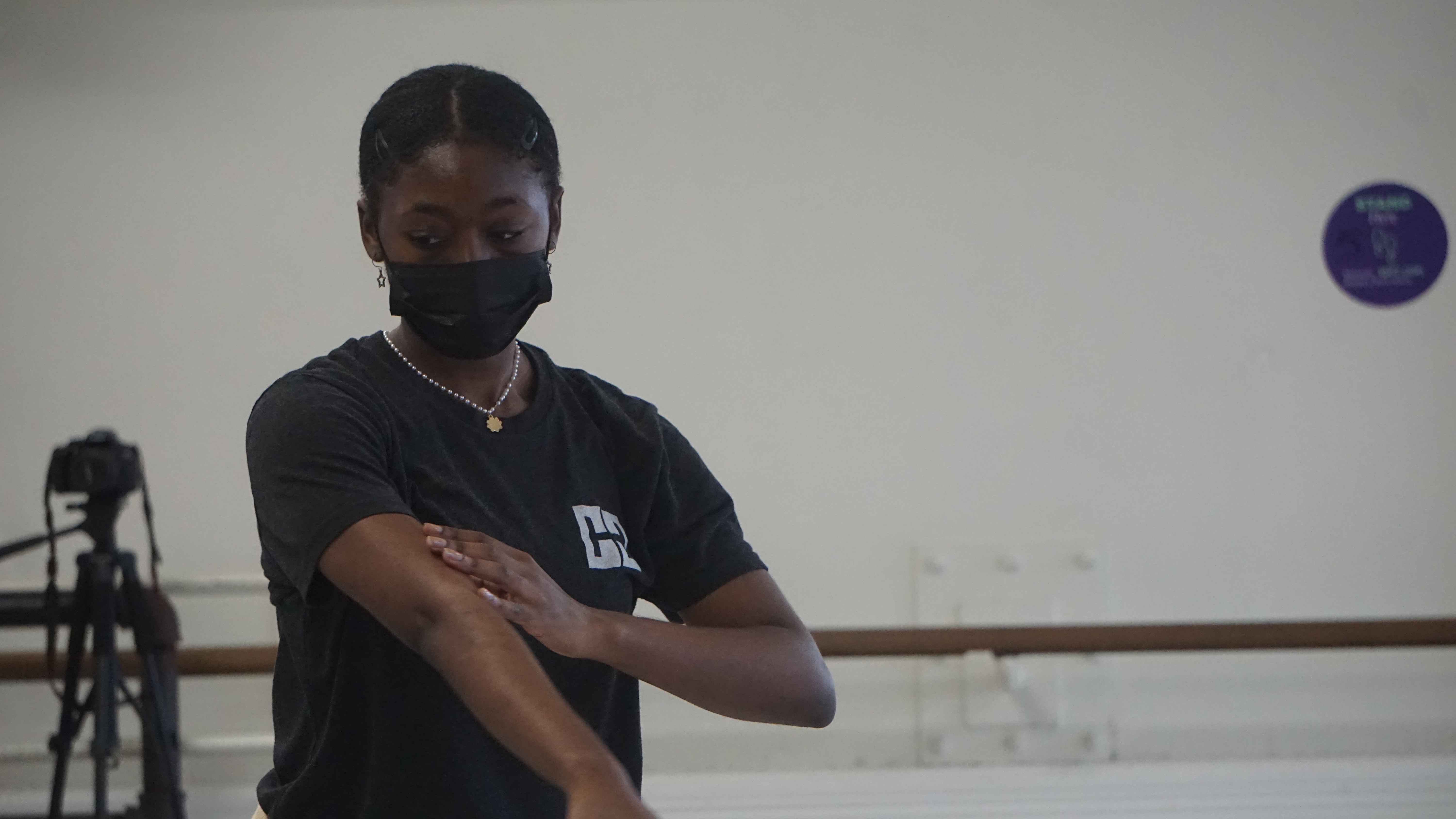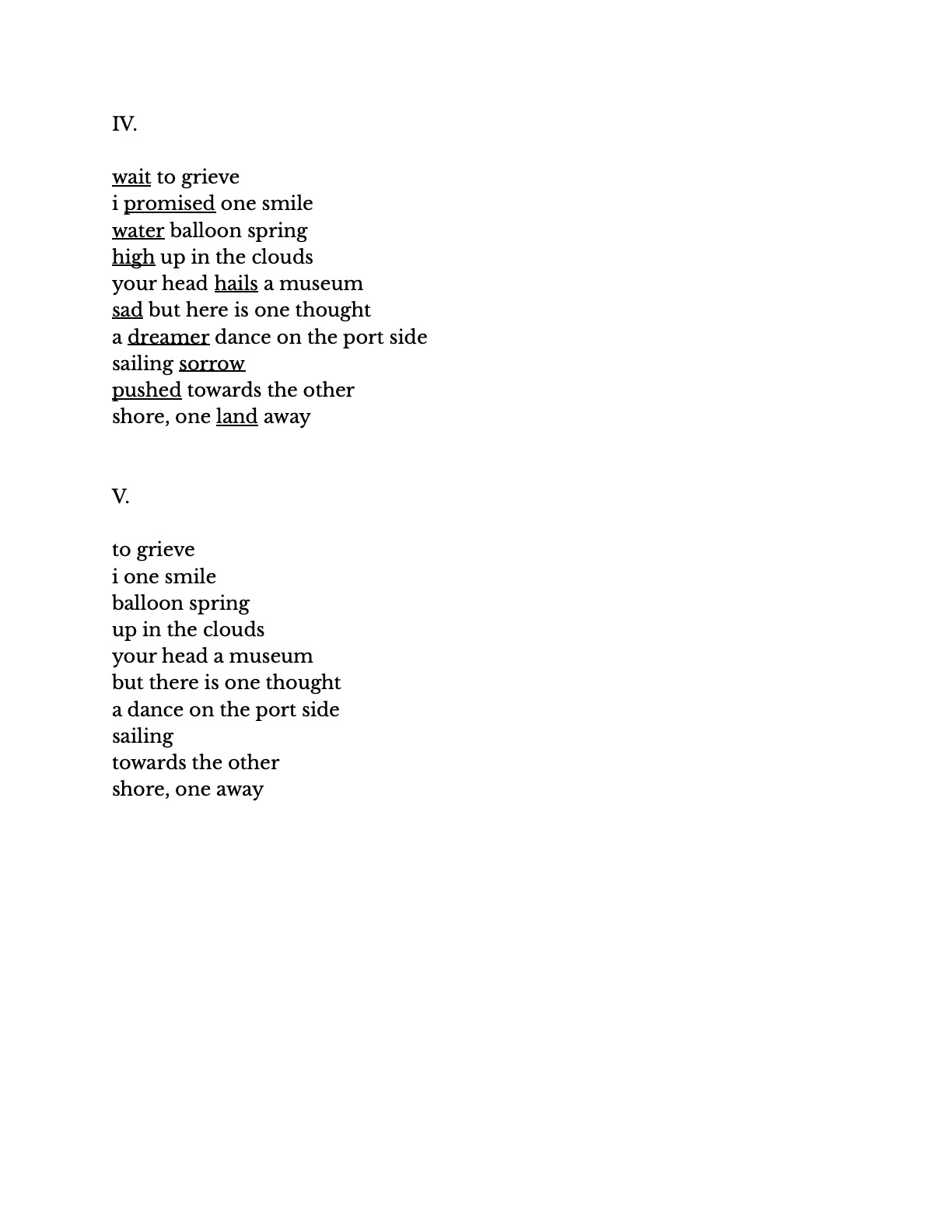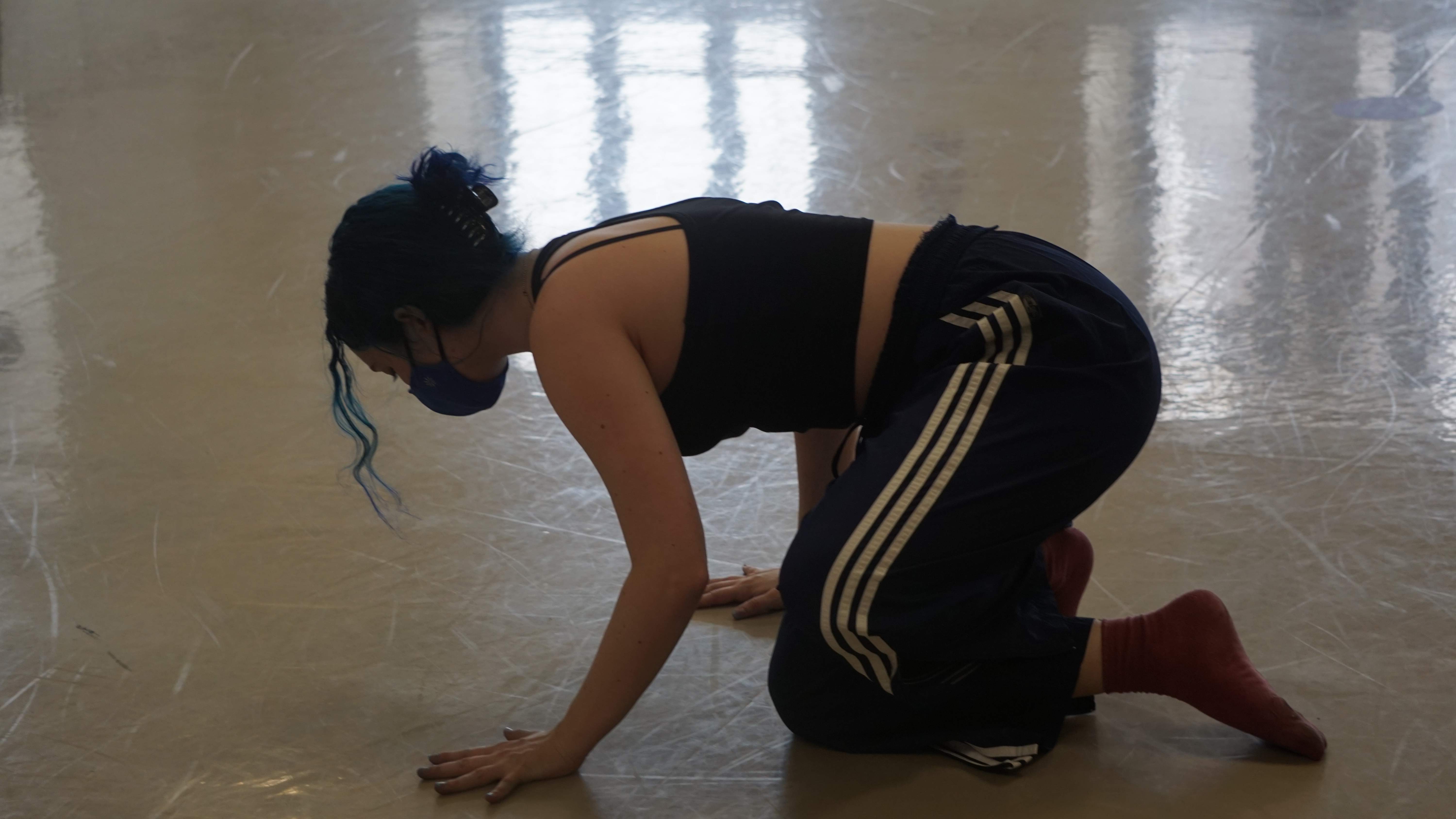I had the pleasure of joining Jeremy Nelson’s BFA 1 creative research class with Hiroka and Israel to be able to convey concepts of erasure as a tool for composition in a simple, effective fashion.
I began the class by introducing my project as an ongoing inquiry into how erasure techniques can be applied to choreographic scores. I gave the example of Trisha Brown’s choreographic scores in her 1979 work, Splang, which consisted of three dancers basing their movements on individualized written instructions. I also showed examples of erasure poetry (i.e. Mary Ruefle) to be able to communicate how strikethrough is a similar, yet disparate version of traditional erasure in which the words from an existing article or piece of writing are completely written over so any hint of what they once were has ultimately vanished beneath the blotched ink. I explained how strikethrough differs from true erasure because we, the viewer of the score, can trace back the score to its original version, can in a sense undo the strikethrough by returning to the score’s unmodified state. I differentiated how the two phrases are made by making a point of the strikethrough in phrase II. After composing material to phrase I. with the intent of pairing movements with each of the 12 lines—if not words—of the score, they can easily move on to phrase II., substituting original material with the added instructions of the strikethrough material. Jeremy asked about the function of the “omission” in the instructions, as opposed to the “insertion” which stands fairly self-explanatory as an addition of material that wasn’t there. But how do you omit something that’s not there? he asked. I clarified his question by describing the omission as not something to be taken literally, but to inform the choreographer or owner of the material about qualities that could be amplified within the existing material.

As I checked in on breakout rooms, I gave some groups who had finished early the new instruction of creating a phrase III. Phrase III. would consist of deleting all strikethrough material, including new material created based on the phrase II. instructions. It would be “true blackout” in which the intention to delete certain lines in the score is carried through (i.e. there is no longer a remnant of the deletion like in strikethrough, as the strikethrough text at this point has completely disappeared). It’s interesting that blackout poetry rarely occurs with a poet blacking out their own words; it often happens with a secondary text that the poet wishes to change. I think the fact that all text belongs to me (or anyone for that matter who decides to write a completed strikethrough) makes the idea of strikethrough a personal one, something that only you can change, even if you happen to work with a choreographer. Ultimately, it is the dancer making intuitive choices on their phrase material based on word-associations they make from within the text.
Once everyone checked back into the main session, we had a breakout room relay showing, in which breakout rooms 1 through 19 showed their phrase I. and phrase II. to the class. In the immediacy of the moment, and the fact that the phrases were only performed once made it difficult to make copious observations about the differences between the two phrases. However, there were general things that as a class we agreed determined the overall trend in differences: directional and body placement changes (almost like phrase II. dictated some kind of vector shift, a detour of some sort to return back to the remnants of familiar material), and variations in quality & duration of gestures.

Drift - Caroline Bergvall

As creating the initial phrase I. was an individual exercise, I noted how significantly more meticulous and strict my approach to strikethrough has been since the completion of the collaborative duet. I wonder if I had asked the dancers to create the phrases I.-V., if the process might have been more disciplined regarding our approach to manipulating material. When I think about it, I often manipulated material outside of the confines of the strikethrough procedure, only piggy-backing off a strikethrough concept, and instead for mere aesthetic purposes.
In correspondence with what the dancers and I had virtually explored in terms of the relationship only between phrase I. and II., I had the class pin either dancer and watch them perform the phrases consecutively and note the differences between the two. For Israel, Casey noticed that “the dynamics of the individual gestures was different...the second phrase seemed to be shorter than the first one. And I could see how specific movements changed... I'm assuming that's because of the change of directives with the strikethrough.”
In order to replicate the two dancers’ experiences in the studio earlier this year, I devised both individual and group activities to interact with the first two phases (I. & II.) of strikethrough #18. In the main session, the class had 10 minutes to create their phrase I. individually. Then for the following 20 minutes, I split the class into breakout rooms of two, giving them the assignment to build phrase II. with their partner. For the first 10 minutes, one partner would act as “choreographer” giving their partner, the “dancer,” verbal suggestions on altering their phrase I. material based on the strikethrough instructions in phrase II. I encouraged these instructions be as much related to the omission/insertion text as possible, with some wiggle room considering what the choreographer suggests may not be possible in the spatial constraints of the dancer’s area, or perhaps even the physical constraints of the material itself. After 10 minutes, partners would switch roles so both generate their own phrase II, yet still with this collaborative overtone.

Drift - Caroline Bergvall
If more time had been allotted, specifically to researching phrase III. and teaching material to others so the same phrases could be overlaid in real time, we would have accomplished a more clear illustration of concepts within the timeframe. However, I think this workshop instead left the class with beneficial ruminations on using text as a compositional tool. Using text, specifically with this group, proved extremely generative—I was surprised not more questions were asked of me on how the exercise worked. To these dancers, they seemed eager to access their creative imaginations in developing material out of both abstract and concrete textual themes. And they didn’t seem overwhelmed by some of the instructions being “mind-blowing” or otherwise just “non-literal.” I think in order to be unlike stage-directions or a musical score, these scores must draw more from Cage, Brown, even Caroline Bergvall, who uses sound design to map words like drifting continents in her work Drift. These scores must force the dancer to access their cognitive capabilities while in the process of composing—because unlike improvisation, where habit and muscle memory takes over, working with these scores is like solving a math problem, even a geometrical proof. There is no one way to solve, but there are known properties that help you get closer to theorizing why something is allowed to exist. It’s like “omitting:” a dancer might ask why omit when you can just insert, but soon to realize that to reach the idea set up by the score, invisible things must be ruminated upon.
We must know the invisible before knowing the visible.
I thank the dancers for joining me on this journey towards what remains of the visible in an overwhelming sea of invisibles.





